
District Trendline, previously known as Teacher Trendline, provides actionable research to improve district personnel policies that will strengthen the teacher workforce. Want evidence-based guidance on policies and practices that will enhance your ability to recruit, develop, and retain great teachers delivered right to your inbox each month? Subscribe here.
It’s back-to-school time for districts across the country, and there’s no doubt many families have spent some time examining this year’s calendar. We also took a close look at both the student and teacher calendars for 2014-2015 in the Teacher Contract Database districts.[1] As always, you can always dig into these numbers on your own, too.
School year for students
This year, the most common school year length across the districts rounds out at 180 days, the same as in 2013-2014.[2] (To be really precise, the average school year for elementary schools and secondary schools is almost the same, at 178.4 days and 178.5 days, respectively.) The average is reduced somewhat by Tulsa’s 167-day school year, giving Tulsa the shortest school year for the third year in a row. Baltimore County, for the second year, has the longest school year at 188 days.
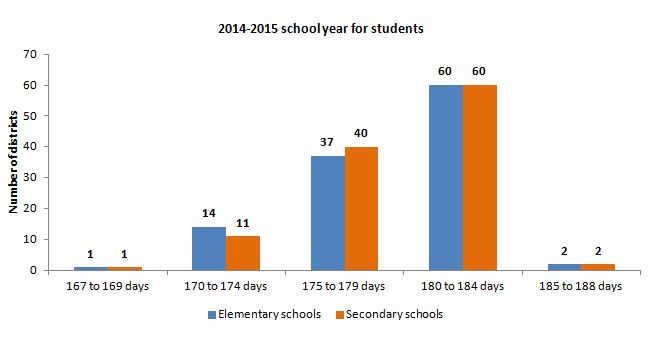
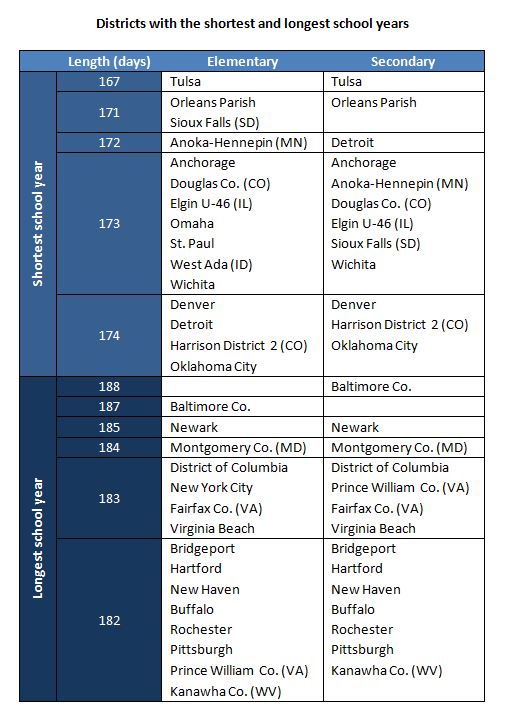
About 91 percent of the districts establish the same school year length for elementary and secondary school students. Ten districts, however, have different school year lengths for their elementary and secondary schools. For example, notice that some districts in the table above— New York City and West Ada (ID)— appear on one side of the list for longest or shortest year for elementary or secondary school, but not on the other.
Of those districts, eight have longer school years for secondary students (Sioux Falls (SD), Anoka-Hennepin (MN), West Ada (ID), St. Paul, Omaha, Burlington (VT), Baltimore County and Portland (OR)) as opposed to only two districts— Detroit and New York City— which require a shorter year for secondary school students. For all these districts the difference in the length of the school year between the grade levels is just one or two days, except for Omaha, where elementary students will be in school four days longer than their secondary school counterparts.
School year for teachers
The school year for teachers is always longer than it is for students. On average, teachers spend 186.8 days in school.
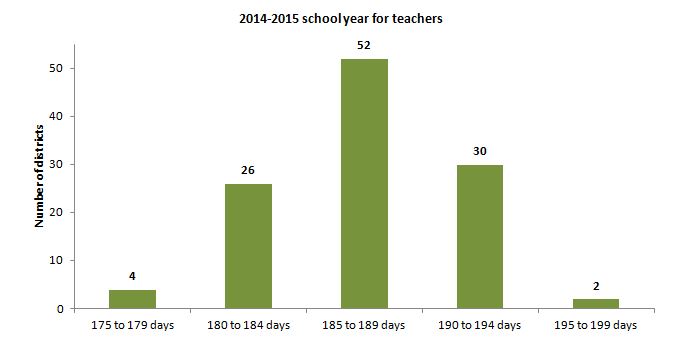
Across the districts, all but one has the same school year length for elementary and secondary school teachers. Anne Arundel County (MD) requires elementary school teachers to be in school two days longer than secondary school teachers, establishing a 187- and 185-day school year for each group of teachers, respectively.
As they did last year, both elementary and secondary teachers will spend, on average, nearly five percent (about nine days) of the school year on-site without students.[3] Elementary teachers spend just slightly more non-student days on-site than secondary teachers (0.4 days, on average). 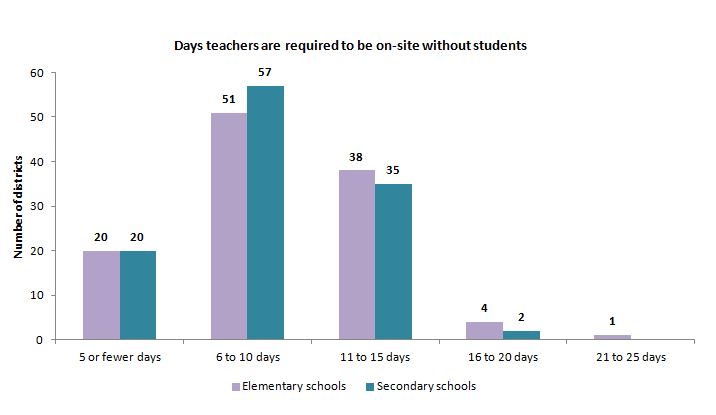
While most districts require teachers to be on-site without students between six and ten days, one district— Granite (UT)— clearly stands out. Granite requires elementary teachers to be on-site without students for 23.5 days. For Granite’s elementary school teachers, 31 days are half days, all of which teachers are required to remain on-site after students are dismissed early. In addition, the district built in eight additional full days when teachers are at school without students.
School year start dates for teachers and students
The start date for the school year varies from late July to almost mid-September for districts across the country. By the end of August, students and teachers will have started the school year in 78 and 90 percent of districts, respectively.
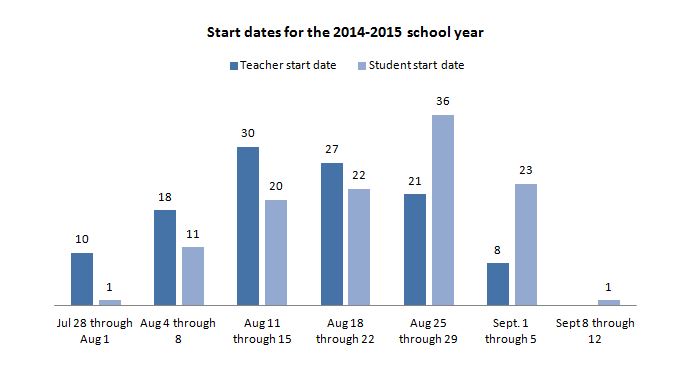
If there’s a pattern to be discerned about start dates, it would appear that districts in the South and Mid-West begin the school year earlier, while East Coast schools tend to have a later start date. Hawaii’s teachers and students kick off the school year the earliest, in late July and early August.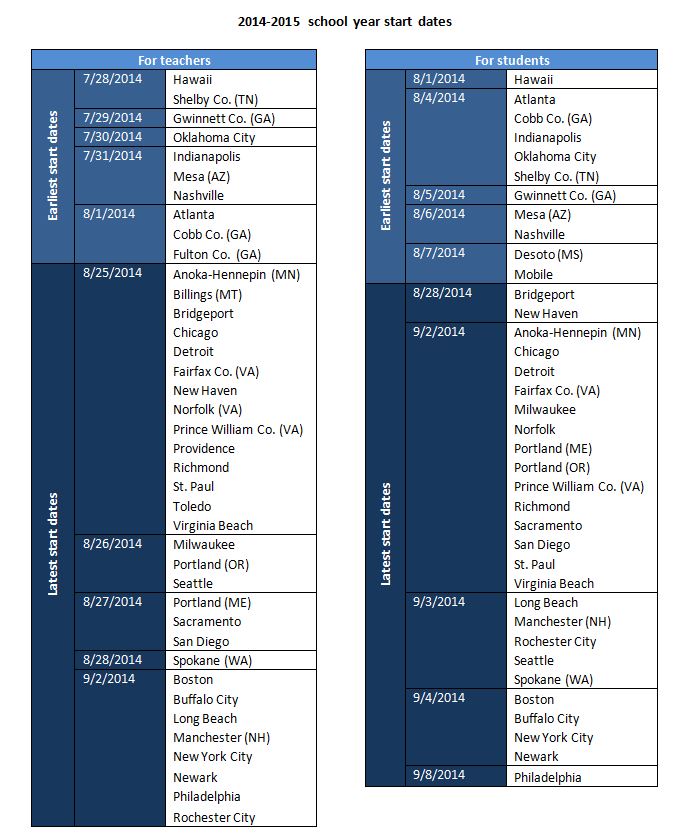
[1] All districts in the Teacher Contract Database except for Fort Bend (TX) and the two charter management organizations- Aspire and Green Dot Public Schools– are included in this analysis. Fort Bend was recently added into the Database and is being coded now. The school calendars for Aspire and Green Dot vary by school site.
[2] Our calculations count half days for students as full days.
[3] Days when students are released early but teachers are required to remain on-site for the remainder of the day are included in our calculations as half-days.
